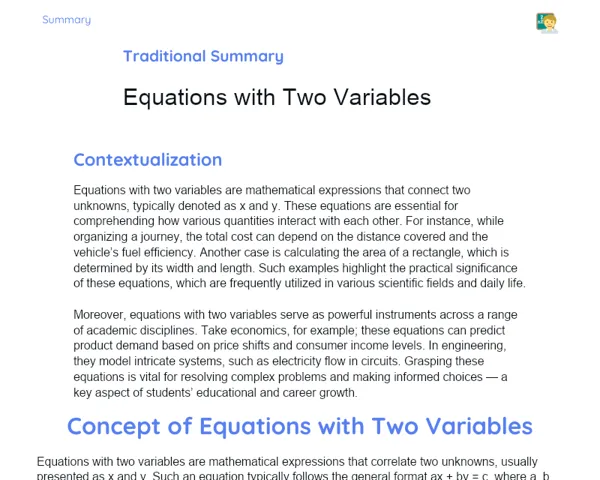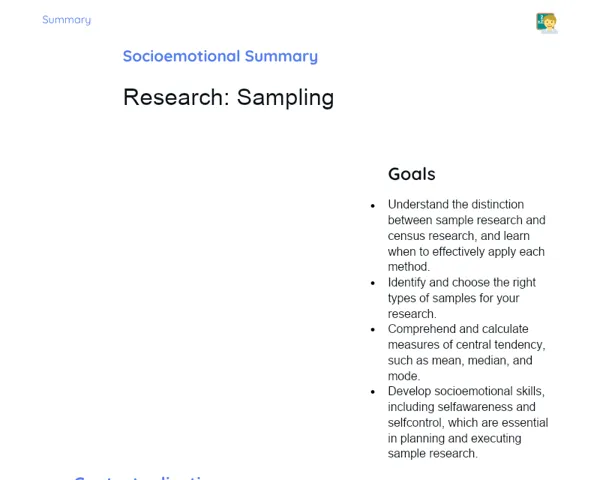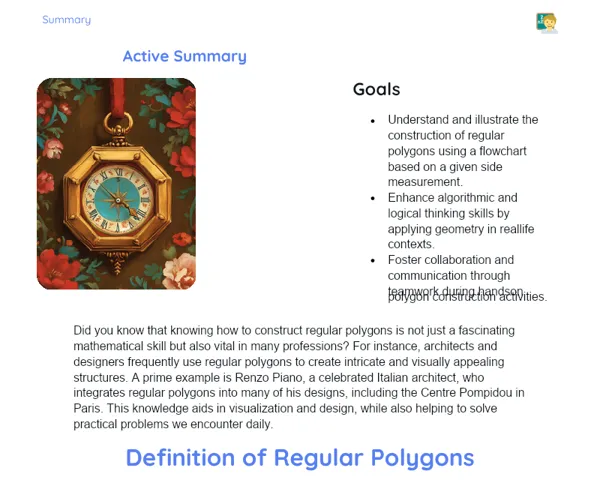Goals
1. Identify right angles and non-right angles in flat shapes.
2. Count the number of right and non-right angles in geometric figures like squares, triangles, and rectangles.
Contextualization
Angles are everywhere around us. From the architecture of our homes to the layout of furniture and gadgets, grasping the concept of angles is very important. For instance, think about a square or a rectangle: the corners are perfect illustrations of right angles. These ideas not only play a role in our daily lives but also form the basis for various careers such as architecture and engineering.
Subject Relevance
To Remember!
Identifying Right Angles
Right angles are those that measure exactly 90 degrees. You’ll find them in geometric shapes like squares and rectangles. Recognizing these angles is essential for comprehending the framework of geometric shapes and for constructing buildings and various objects we use daily.
-
Right angles measure exactly 90 degrees.
-
They can be found in squares and rectangles.
-
Crucial for the stability of structures.
Identifying Non-Right Angles
Non-right angles are those that don’t measure 90 degrees. They can either be acute (less than 90 degrees) or obtuse (more than 90 degrees). Recognizing these angles is important for analyzing more complex shapes and for innovating designs and structures.
-
Acute angles measure less than 90 degrees.
-
Obtuse angles measure more than 90 degrees.
-
Seen in shapes like triangles and irregular polygons.
Counting Angles in Geometric Shapes
Counting right and non-right angles in shapes aids in understanding their composition and boosts analytical skills. This practice is important for practical applications, like creating models and examining architectural plans.
-
Counting angles helps you grasp how figures are composed.
-
Essential for analyzing layouts and designs.
-
Enhances analytical and observational skills.
Practical Applications
-
In construction, right angles ensure that the walls of a building remain perpendicular, which guarantees stability.
-
In interior design, a good grasp of angles allows for the crafting of furniture and accessories that are both functional and visually appealing.
-
In software and game development, angles are key to designing graphics and user interfaces, ensuring visual elements are precise and functional.
Key Terms
-
Right Angle: An angle that measures precisely 90 degrees.
-
Acute Angle: An angle that measures less than 90 degrees.
-
Obtuse Angle: An angle that measures more than 90 degrees.
-
Geometric Shape: A figure defined by points, lines, and angles, such as squares, triangles, and rectangles.
Questions for Reflections
-
How does understanding right and non-right angles change the way you see your surroundings?
-
In what ways can recognizing and counting angles be beneficial in the career you wish to pursue?
-
What everyday items do you think were designed with the importance of right and non-right angles in mind?
Angle Hunt in Real Life
This mini-challenge aims to help you spot and utilize your knowledge about right and non-right angles in objects from your daily life.
Instructions
-
Pick three objects in your home or school that have right and non-right angles.
-
Sketch the objects on a sheet of paper.
-
Identify and mark all the right and non-right angles in each drawing.
-
Write next to each sketch how many right and non-right angles you discovered.
-
Take a photo of your sketches and bring it to the next class to share with your classmates.



